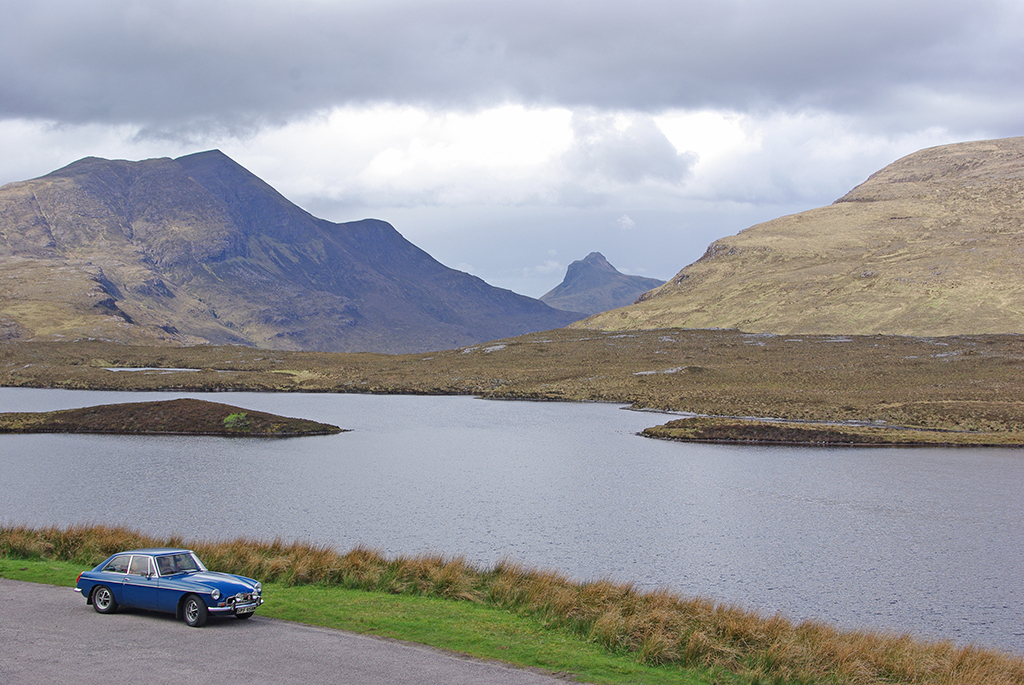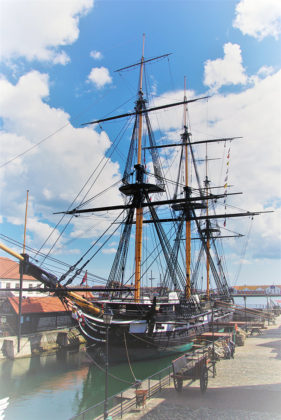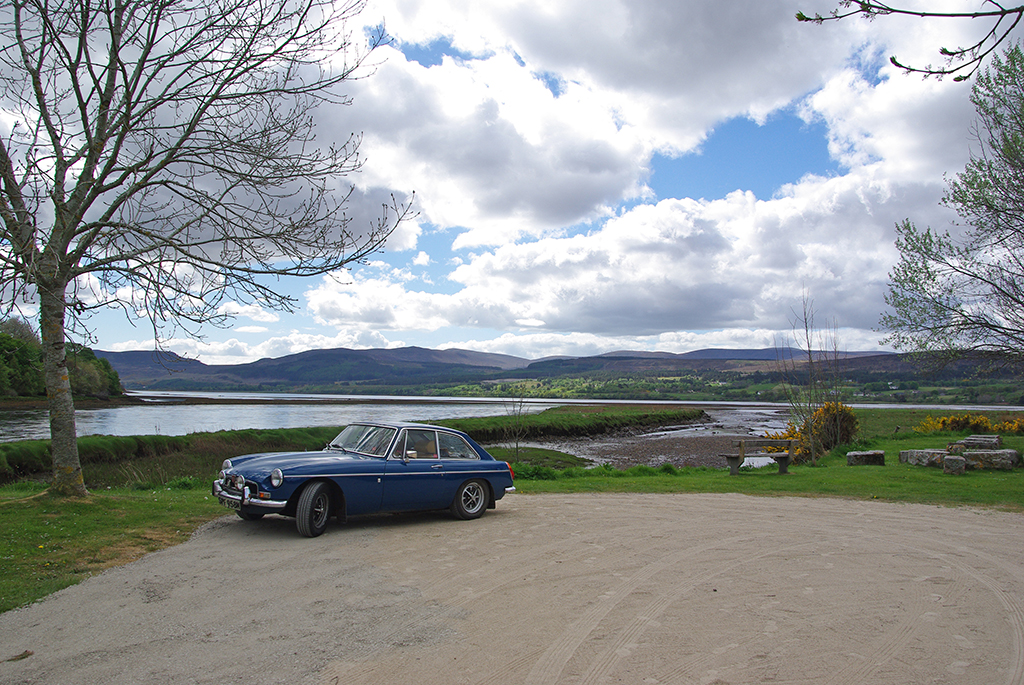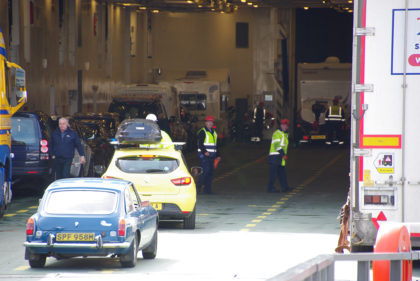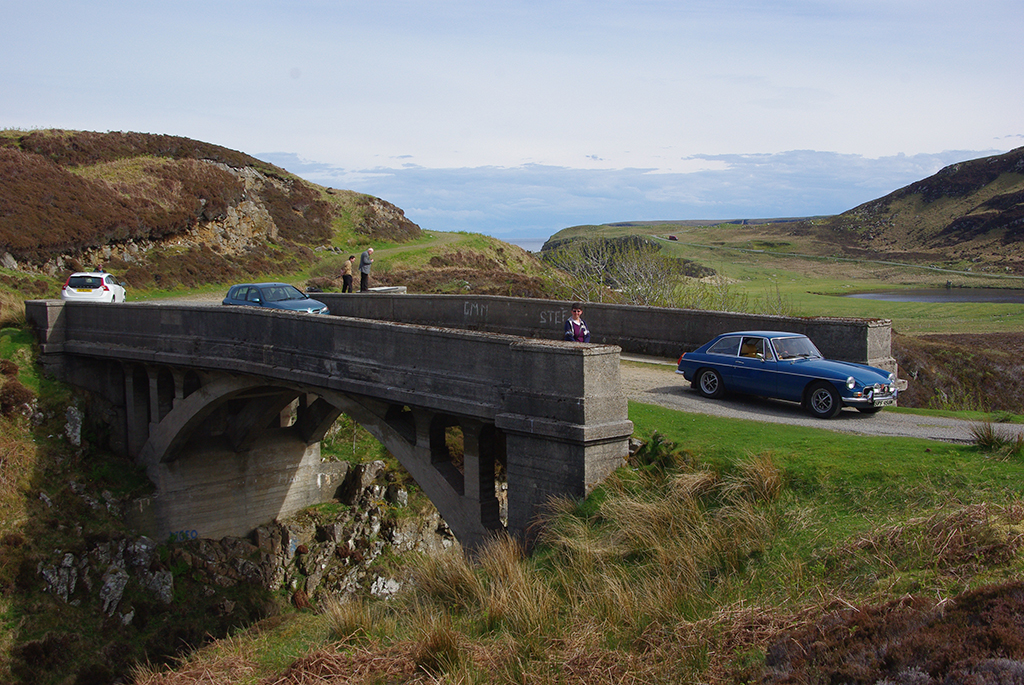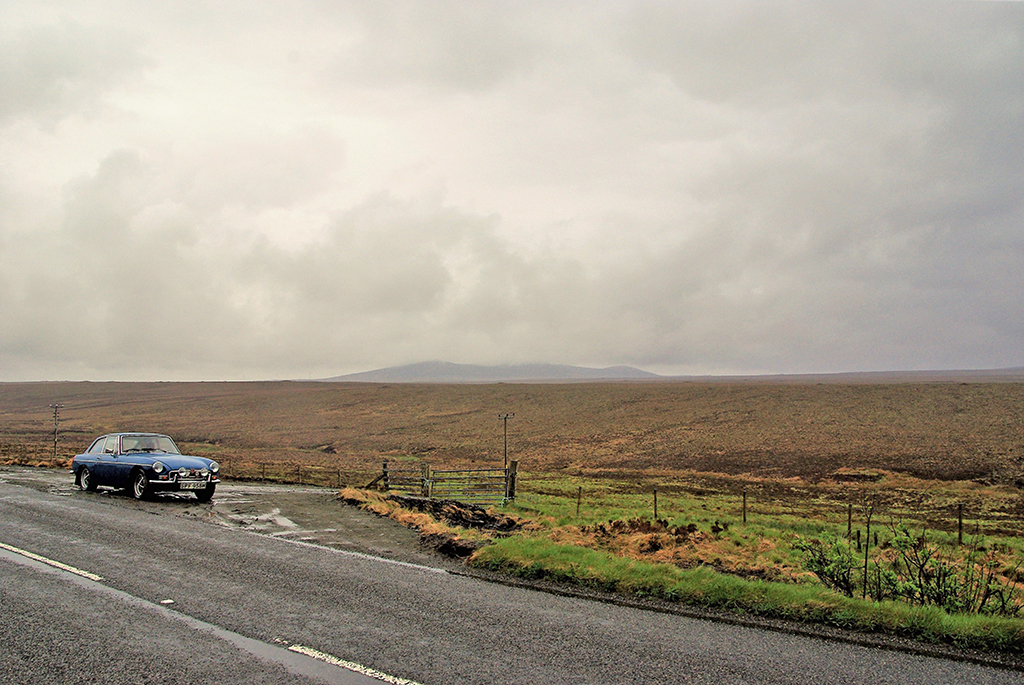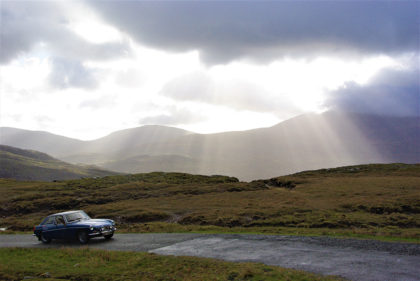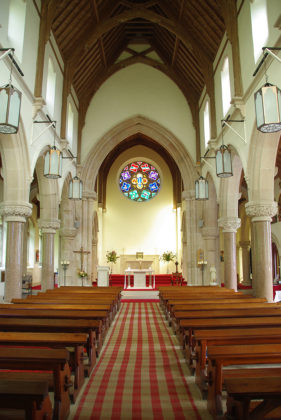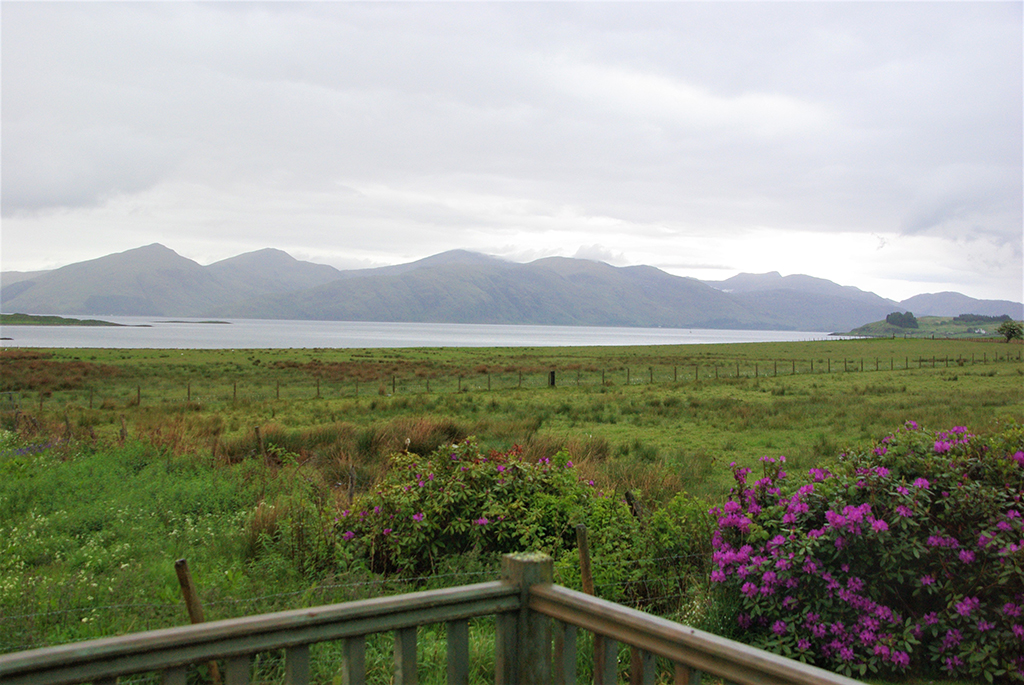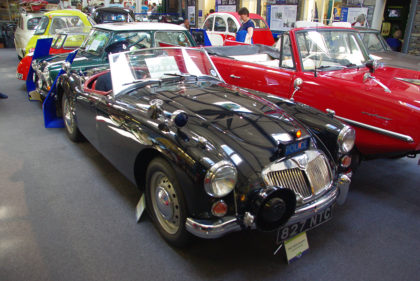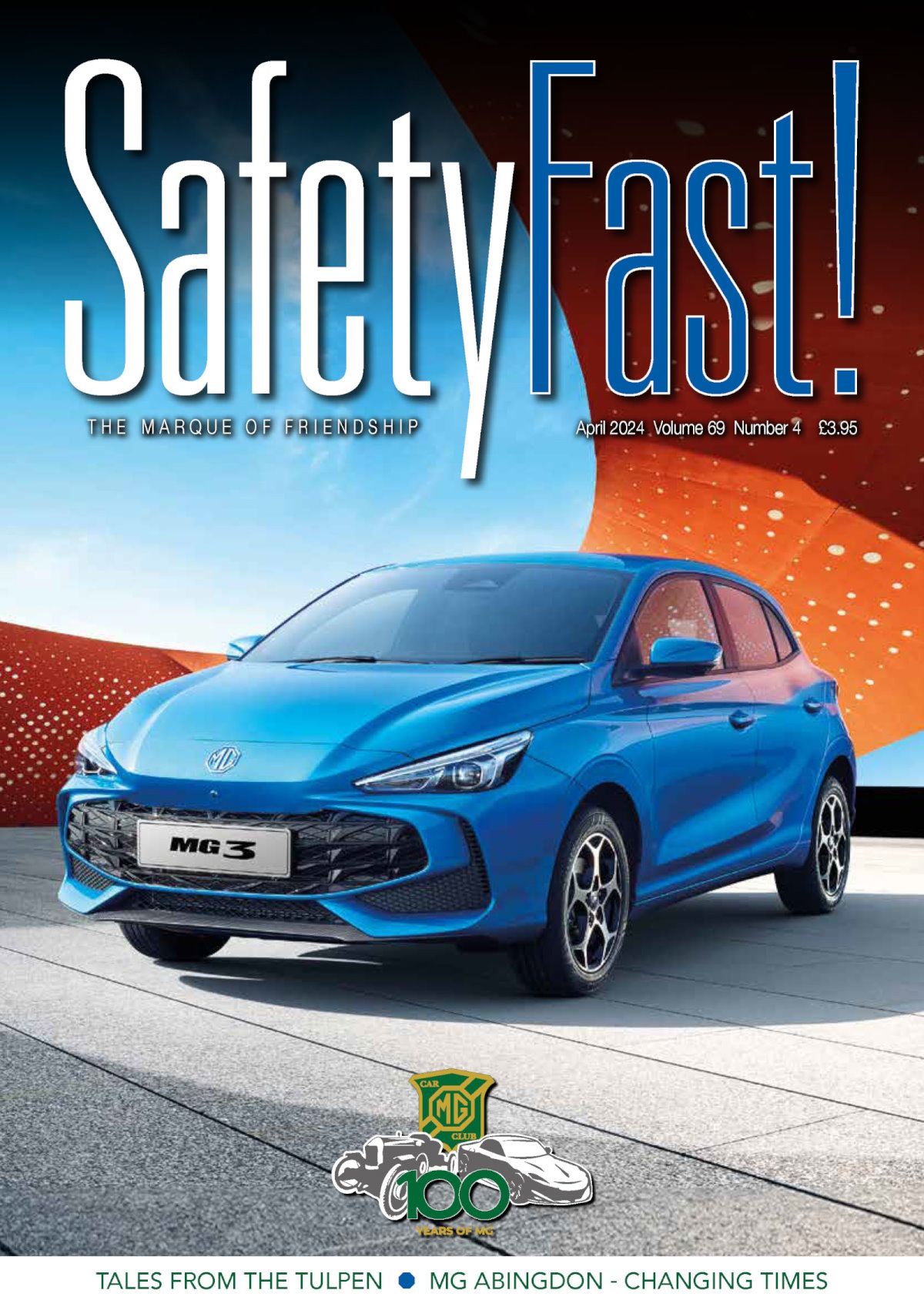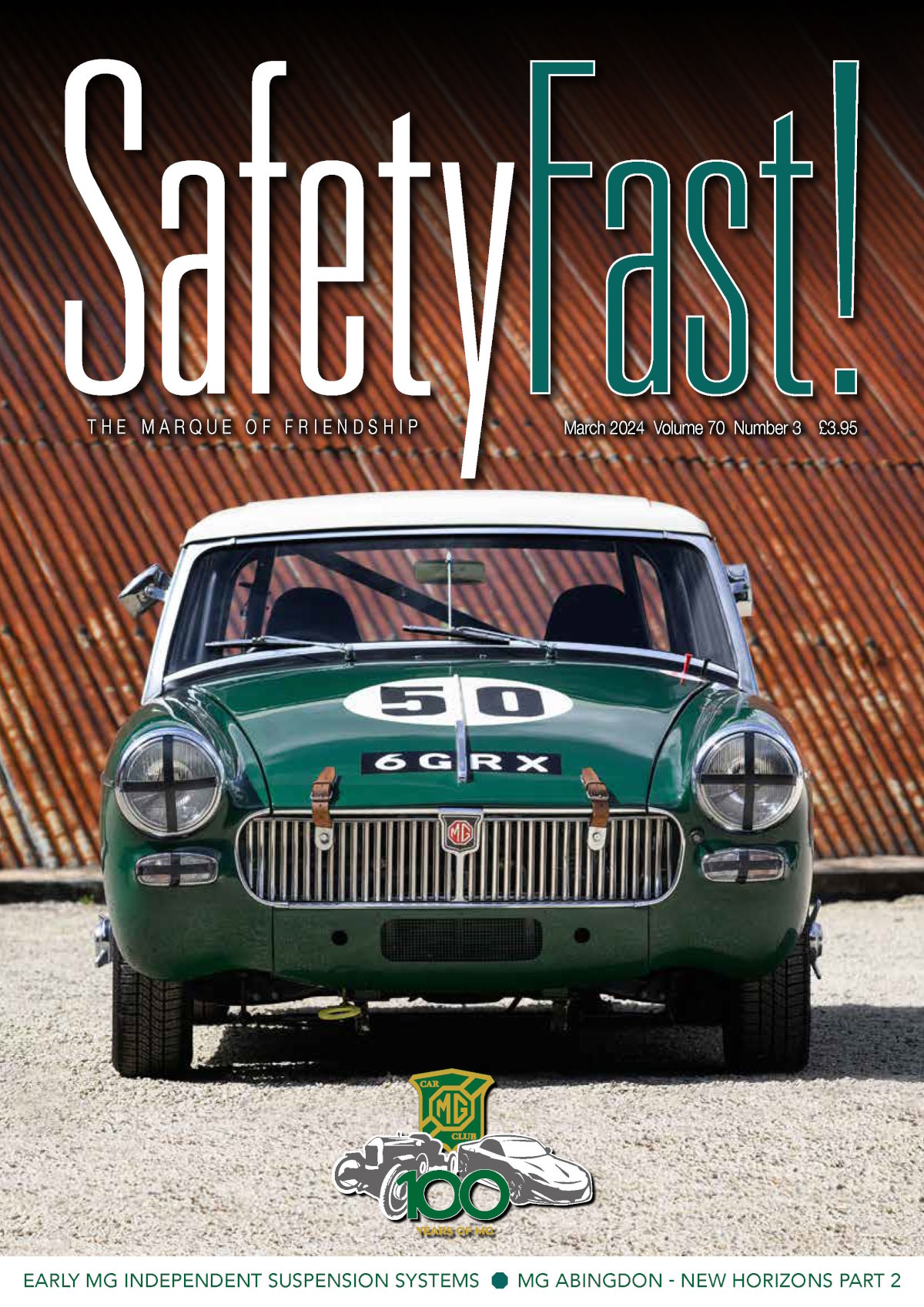Bury St Edmunds to Benbecula and Back by B
Reproduction in whole or in part of any article published on this website is prohibited without written permission of The MG Car Club.
Hebrides Diary – By Paul Purnell
I was taken by the Lewis Trilogy by Peter May that I’d read, a trio of novels set on the Outer Hebridean Islands of Lewis, Harris, Benbecula and North and South Uist. I was so taken by the descriptions of the islands that I decided that one day I would like to visit them. I mentioned this to my wife Mary who, having also read the books, said: “No thanks, it sounds too bleak and cold for me.” The idea went on the back burner.
Later in the year I told my daughter, Louise, of my intention and that I might go in the MGB GT. “What, on your own?” she said.
“Well Mum doesn’t want to go, so yes.”
“You can’t go alone, I’ll come with you.”
Over the next couple of months plans were made, Louise booked leave from work, I bought maps and planned routes and booked accommodation and ferries.
SPF 958M had its MOT in February, including a service and new oil filter and oil change. I did a couple of minor jobs like making sure that the driver’s seat could be adjusted to accommodate Louise’s shorter legs and that the heating and ventilating all opened and closed correctly ,then, at the last minute, I realised that a couple of new tyres were in order.
And so at 9.00am on Saturday May 13 we left home near Bury St Edmunds and headed north via Thetford and King’s Lynn to Boston in Lincolnshire and our first stop at the Bubble Car Museum just to the north of the town on the B1192. An interesting place to spend an hour or two with Messerschmitt’s, Heinkels, a Trojan and lots of Bond Bugs including a prototype four-wheeled version. Then north again over the Humber Bridge to Scarborough for our first night’s stop.
Sunday morning saw us on the road again to Whitby and round Middlesbrough to Hartlepool to visit the National Museum of the Royal Navy and HMS Trincomalee, a three-masted, square-rigged frigate with 38 guns built in what was then Bombay, now Mumbai, in 1817. Apparently, there was a shortage of oak in England for ship building at that time so she was built in India from teak. This coincidentally proved to be a better material as it was more resistant to rot. When she was completed she was sailed to Portsmouth, but by this time Britain was no longer at war with France and she was surplus to requirements. She had her masts removed and the deck roofed over and was kept in Portsmouth Harbour for the next 25 years, eventually being commissioned and sent to North America and the West Indies in 1847.
From Hartlepool we circumnavigated Durham and took the A68 to Edinburgh for a three-night stop during which the B sat in the Hotel car park while we used the bus. A £4 day ticket allowed unlimited travel on buses and trams throughout the city area, a real bargain to get about with. We visited the Royal Yacht Britannia, the Scottish Parliament and Holyrood Palace, among other places.
After a two-day break the MGB was fired up again and we set off over the Forth Road Bridge and north to Balmoral on the A93. Here we took a walk through the gardens and visited the ballroom, the only room open to the public, this being a private residence. After lunch in the tearoom we headed north again through the Cairngorms National Park on the A939. In some sections this is quite a hairy ride with blind rises, hairpin bends and narrow roads with passing places. At Speybridge we headed west to join the A9 into Inverness.
After a pleasant night at the Riverside Hotel, we set off again to Ullapool via the A836 long route over Bonnar Bridge, Oykel Bridge and Ledmore. More narrow roads with passing places and blind rises through magnificent views across open gorse land with the mountains in the background and lochs of all shapes and sizes everywhere. This gave an approach to Ullapool from the North East. Louise had been examining the map and had discovered the Corrieshalloch Gorge and the Falls of Measach a dozen miles south of Ullapool on the A845, so we did a bypass and paid them a visit. This was certainly a good move; after a short walk down from the car park there is a pedestrian suspension bridge over the Gorge with the river 197 feet below, the falls are to your right and below the bridge. Walk on another 300 yards to a viewing platform for a look back at the falls with the bridge over them. On returning to the car we retraced our route back to Ullapool for the night.
Next morning after breakfast we checked in at the Ferry Terminal and boarding started at 9.45am. The Loch Seaforth sailed exactly on time at 10.30am and docked in Stornoway at 1.00pm after an uneventful trip on a beautifully calm sea.
We were not due to check in to our hotel until later in the day so we decided to drive out to the extreme end of the Eye Peninsula to the Tiumpan Head Lighthouse, a distance of about 14 miles from Stornoway. On the way, we stopped off at the memorial to those lost by the wreck of HM Yacht Iolaire. This ship had run aground in bad weather at 1.55am on the morning of January 1 1919 when bringing sailors home after serving in Royal Navy ships during World War L. Of the 284 passengers and crew on board only 79 survived, despite the ship being, at one time, only 20 feet from the shore. This, together with almost a thousand men lost fighting during the war, effectively caused the loss of an entire generation of young men on Lewis.
After checking in to our hotel, there was still plenty of daylight left so we headed north east on the B895 to the Bridge to Nowhere. When Lord Leverhulme owned the Island of Lewis between 1918 and 1923 he had big ideas for developing the Island, including building a road from the settlement of Tolsta on the east coast to the northernmost point of the Island at Port Nis. The local population weren’t in favour of the road being built as they wanted the land to remain as crofts rather than the Laird using it for his road. Work stopped in 1921 and has never been completed, hence the Bridge to Nowhere.
Saturday May 20, a windscreen-wiper day all day with the skies overcast and a fine drizzle. After breakfast we set off across the Island on the A857 to the west coast at Barvas and then north to Port Nis and the Butt of Lewis, the northernmost point, where there is a lighthouse. This area features in the novels by Peter May as the hero’s hometown and is the site of the murder on which the story is based. The countryside is very much as described in the books and is very sparse and windswept.
From here you can do no more than retrace your route back to Barvas where a right turn onto the A858 continues down the west coast. At Arnol we visited the Blackhouse Museum, an example of the type of dwelling common throughout the islands a century ago, stone-built two-roomed buildings roofed with gorse, the last of which was still occupied in 1974. Electricity arrived in the 1950s followed by running water a few years later. Heating and cooking were done by burning the local peat and, on talking to the young lady at the Museum, this is still a common form of heating on the Island today. A number of places in this area feature in the Peter May books.
Heading further south we came to Callanish where there is a group of standing stones and stone circles dating back to 2,900 BC. From here, still on the A858, there is a fork in the road, both ways signposted to Stornoway. The navigator was busy not watching the road at this point, so I took the left fork which proved to be the narrowest back road we had encountered the whole trip so far. An early night tonight, we need to be on the road by 6.00am tomorrow morning in order to get to the ferry to Berneray by 9.00am.
Six thirty saw us on the road on another overcast day, not wet enough for single speed windscreen wipers, but a trained navigator with one thumb on the wiper switch worked just as well as an intermittent wiper. We headed south from Stornoway down the A859 to Harris. The landscape here changed dramatically, being more mountainous and the roads more twisting and turning, still single track in places with passing points. The scenery is tremendous – vast, unsettled expanses of gorse and sheer rock faces, with lochs of every imaginable shape and size everywhere you look and views across a changing sea to adjacent islands.
We arrived at Leverburgh, the ferry terminal, with almost an hour to spare so carried on to the end of the road at Rodel to see the church of St Clements. This is a stone church dating from the 1520s, built by the Clan McLeod and allowed to fall into a state of disrepair in the 1800s until being renovated by the Duchess of Dunmore in the 1870s.
The ferry to Berneray was uneventful, despite the weather, and so south on the A865 through North Uist, Benbecula and South Uist to our final stop on the islands at Lochboisdale. I had been warned that the Islands were likely to be very quiet on a Sunday but I didn’t expect that there would be nothing operating at all. On arriving at our destination, we approached the hotel at the quay side to see if we could get lunch only to be told that they didn’t do meals on Sunday! We were able to convince them to supply us with a couple of toasted sandwiches and suddenly they had some very good leek and potato soup available as well. We had received an email from CalMac Ferries advising that tomorrow’s ferry to the mainland had been delayed due to adverse weather and would not be sailing until 9.00am instead of 7.00am. This allowed us another two hours lie in.
We left our farmhouse at 7.45am and made our way to the ferry terminal just after eight. After checking in we waited to board at 8.45am. There were not many vehicles, a handful of cars and a single seven tonner, and we wondered why we were all parked at the stern of the car deck. Once we were beyond the breakwater and at sea we realised that by putting all the weight at the stern the bow was higher and took the rough seas better.
Arriving at Mallaig at 12.30pm we drove off the ferry and past the railway station, where the Jacobite steam train had just arrived, and headed off down the A830 towards Fort William. Lunch was had in the railway carriage restaurant at Glenfinnan Station where we saw the returning Jacobite and the afternoon Royal Highlander passing on the short length of double track. Near here is the viaduct that featured in the Harry Potter films when Harry flew over the train in Ron’s dad’s stolen flying Ford Anglia on their way to Hogwarts. We pressed on through pouring rain to find our accommodation at Port Appin, south of Fort William.
The following morning, after a superb traditional Scottish breakfast, we headed back to Glenfinnan Station to take the hill walk to the view point overlooking the viaduct. We had been told the previous day that it was about a 40-minute walk with one or two steep bits. We missed the train on the viaduct but did manage to photograph it passing just below us. We continued the circular walk to the visitor centre and the Church of St Mary and St Finnan.
On completing the walk back to Glenfinnan we drove back to Fort William to catch the afternoon run of the Royal Highlander steam train to Mallaig. We had been allocated seats on the left of the train and so had a good view of the scenery to the south, this also put us on the inside of the curve of the viaduct. There is an hour to spend in Mallaig before returning to Fort William. We then had a 45-minute drive from here to our accommodation. This meant we arrived at the Road Closed barrier 15 minutes too late. The main road leading to our B&B was being resurfaced in night closures. The fellow at the closure was helpful as our accommodation was halfway through the closed section and he arranged for us to be escorted to our turn-off.
After another of those breakfasts we set off south again towards Glasgow, stopping on the way to photograph Castle Stalker, a part-ruined tower on a small island off the east bank of Loch Linnhe, Kilchurn Castle, another semi-ruin at the north end of Loch Awe, and to visit Hill House, a National Trust of Scotland property designed for the publishing magnate Walter Blackie by Charles Rennie Mackintosh and his wife Margaret Macdonald in 1902. To anyone interested in the Arts and Crafts design period this is a must-see place.
Our next overnight stop was to be in Ambleside, still some distance away, so we found our way round Glasgow and onto the M74/M6 heading south as far as Penrith where we turned onto the A66 and A591, arriving in Ambleside just in time to wash up for dinner.
Thursday the 25th, the MGB had another day off while we took the Windermere lake cruise from Ambleside at the north end of the lake to Lakeside at the south end, a pleasant 10 miles in glorious sunshine. Having purchased combined cruise and Lakeland Motor Museum tickets, we were met at Lakeside by the museum’s bus for the short journey to the museum itself. This has a variety of vehicles, cars and motorcycles from all eras and including a 1954 TF, a 1929 M type Midget and an MGA Twincam roadster in shiny black complete with blue police lights and sirens and a constable at the wheel with what used to be known as a WPC seated beside him. From here we returned to the dock at Lakeside in time to see the Lakeside and Haverthwaite steam train return from its latest run and to catch the return cruise to Ambleside. A very pleasant day off from driving.
Friday was getting home day so, after killing some time walking round Bowness, we headed for Blackwell, another arts and crafts house a couple of miles south. It was built as a holiday home overlooking Windermere for Sir Edward Holt, a Manchester brewery owner, his wife and five children.
From here we took the A590 to the M6 and A14 to home in Bury St Edmunds, a distance of 280 miles, 260 of them on motorway or dual carriageway at about 3,000 revs in fourth overdrive for about five hours.
Altogether we travelled 1,738 miles at an average of 35 miles per gallon, the oil pressure remained constant at 65 psi and the temperature occasionally went over normal, but with the help of the Kenton fan this was soon brought under control. This run has been a good test of the state of an engine that has just gone over 113,000 miles and I am very pleased with the performance.

 MG Car Club
MG Car Club